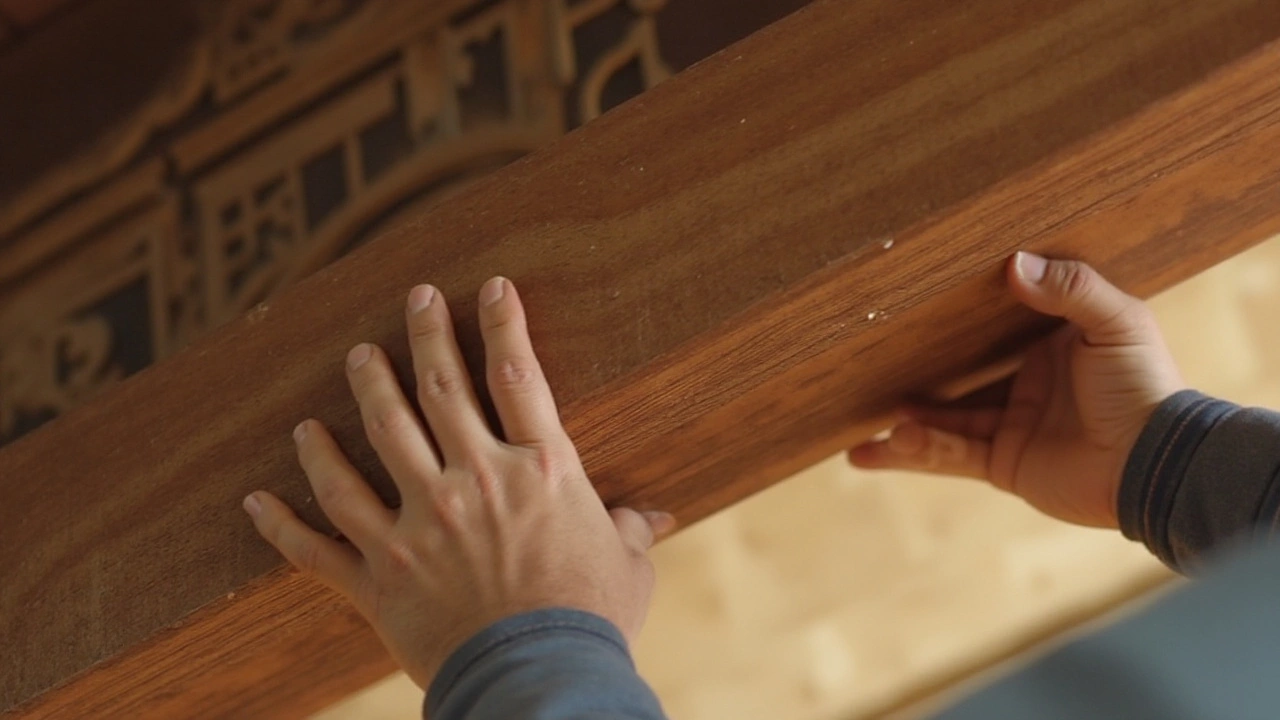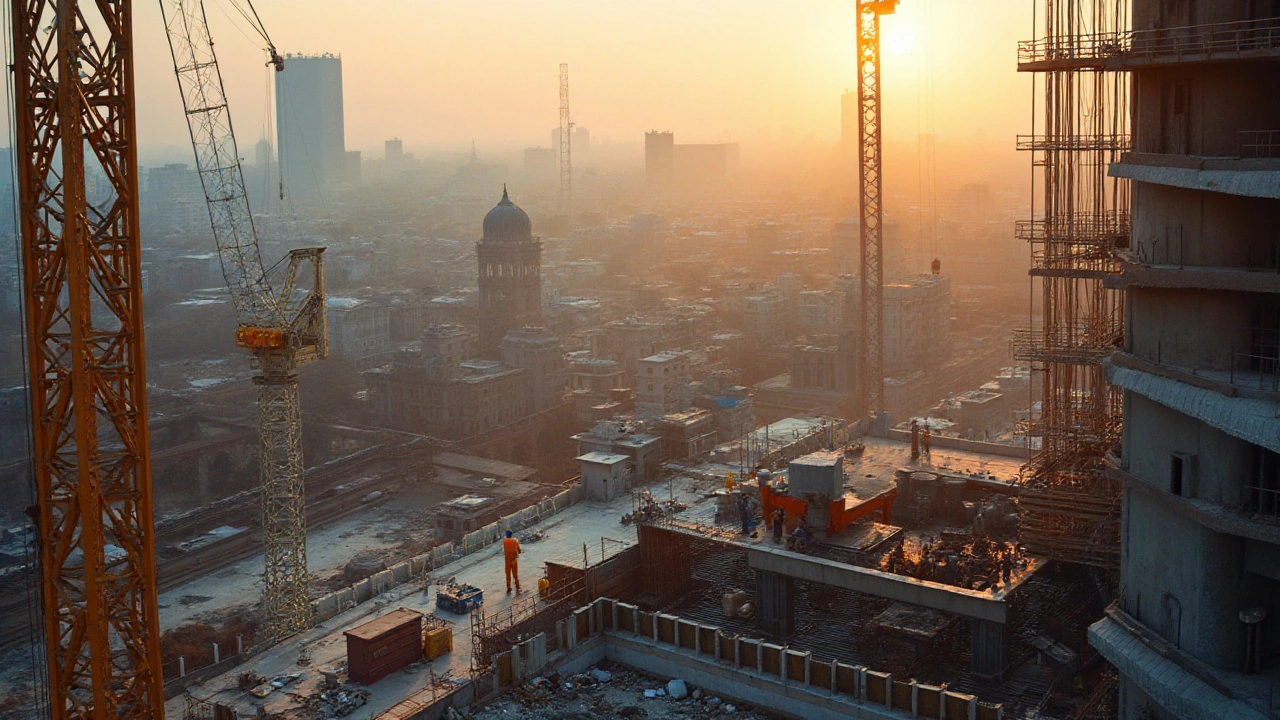In the world of construction, the materials we choose form the very essence of our built environment, shaping cities and communities. Each material has unique properties that cater to different structural needs and designs, influencing both aesthetics and functionality. Learning about the most common materials employed in construction gives us a deeper appreciation of their roles and the impact they have on the structures we inhabit daily.
From the skyscrapers piercing the sky with their steely frame to the cozy warmth of wooden homes, each material tells a story of tradition and innovation. These materials are not just building blocks; they are the core of modern engineering, each contributing to the durability, sustainability, and elegance of structures we rely on. Dive with us into the essentials of construction materials, and discover why these ten materials have stood the test of time and continue to define our spaces.
- Concrete: The Backbone of Modern Structures
- Steel: Flexibility and Strength in Skyscrapers
- Wood: Timeless Beauty and Sustainability
- Brick and Block: The Classic Choice
- Glass: Brightening Modern Design
Concrete: The Backbone of Modern Structures
Concrete is the unsung hero of the construction materials world—a seemingly unassuming blend of sand, gravel, and cement that forms the backbone of nearly every modern structure. Known for its durability and versatility, concrete has been a staple in building for thousands of years, with roots tracing back to ancient Roman architecture where it was used to create iconic structures like the Pantheon. Today, its ability to be molded into any shape and reinforced with steel makes it invaluable for everything from bridges and skyscrapers to homes and pathways. Engineers often praise concrete for its remarkable strength in compression, a key factor in supporting heavy loads, enabling us to construct larger and taller buildings than ever before. Yet, despite its strength, concrete is a highly adaptable material that can be engineered to perform more specialized tasks, such as resisting earthquake forces or capturing solar energy through innovative technologies embedded within.
The magic of concrete lies not just in its composition but in its transformative journey from a liquid slurry to a solid form, offering builders creative freedom alongside structural integrity. This transformative process, known as curing, is where concrete gradually gains strength over time—a characteristic allowing ancient Roman structures to stand against centuries of natural wear. Interestingly, the longevity of concrete has led to debates about its environmental impact, spearheading advancements like the development of eco-friendly alternatives such as geopolymer concrete which promises to reduce carbon emissions significantly. According to a reported analysis by the Global Cement and Concrete Association, concrete is responsible for about 8% of global CO2 emissions, which positions sustainable innovation at the forefront of industry efforts.
César A. Hidalgo, in his book "Why Information Grows," notes, "The driver of the modern world, cast one layer at a time into robust reality, is ubiquitous and almost invisible: concrete."
While concrete boasts impressive resilience, its effective application relies heavily on understanding diverse mix designs, water-to-cement ratios, and curing processes tailored to specific environments. The challenge of minimizing concrete's weaknesses in tensile strength is ingeniously addressed through the integration of reinforcing bars, or rebar, which counteract this deficiency by offering the tensile strength it lacks. Additionally, advancements in construction technology have seen the rise of self-healing concrete, which incorporates bacteria within its mix to mend cracks over time, an innovation aimed at prolonging its life and reducing maintenance costs. Modern buildings benefit not only from the robustness of traditional reinforced concrete but also from these pioneering techniques, exemplifying construction's evolution into a blend of ancient and futuristic elements.
Striking a balance between sustainability and practicality has become a centerpiece of the construction industry’s mission. Concrete's longevity and cost-effectiveness make it the go-to choice for many projects, yet its environmental footprint cannot be ignored. Eco-driven solutions are shifting focus towards increasing the use of recycled materials and innovating alternative binders to cement to mitigate climate impact while maintaining the high-performance standards that builders expect. As we forge ahead in building the infrastructures of tomorrow, concrete’s role will continue to adapt, anchoring itself firmly in the construction industry as a material that quite literally underpins our dreams.
Steel: Flexibility and Strength in Skyscrapers
The rise of skyscrapers that pierce the sky and define cityscapes is a testament to the transformative power of steel. This formidable material, often dubbed as the backbone of modern architecture, blends strength with flexibility—the two essential qualities needed for the construction of towering structures. The inherent flexibility of steel makes it remarkably suited for the dynamic loadings experienced by skyscrapers, which sway gently with gusts of wind. Its high tensile strength allows these giants to rise confidently toward the heavens, offering unmatched height and architectural splendor without compromising safety. The balance between these qualities contributes significantly to its widespread use in the modern construction industry.
Understanding the journey of steel from raw material to a cornerstone of construction reveals fascinating aspects of industrial and engineering innovation. The process typically starts with the extraction of iron ore, which undergoes refinement and processing at high temperatures in facilities known as steel mills. This meticulous process gives rise to an alloy that can resist weathering and pressure while being molded into various forms necessary for construction purposes. The ability to modify steel’s properties by compromising different elements such as carbon has revolutionized its application, allowing for specialized uses in different types of construction materials.
One iconic example highlighting the prowess of steel in skyscrapers is the Empire State Building, an early 20th-century marvel that stood as the world’s tallest structure upon completion. Its design utilizes a steel frame that weighs a mind-bending 57,000 tons. The modular nature of these steel frames facilitated quick assembly, making it possible to erect up to four and a half floors a week—a staggering pace for that era. Fast forward to today, and steel’s utility in high-rise buildings continues to evolve. Heavy-duty steels are now used to withstand earthquakes, owing to their ability to absorb kinetic energy and dampen seismic waves.
The versatile use of steel in construction extends beyond mere structural support. It plays a crucial role in architectural elegance, providing possibilities for aesthetically pleasing exteriors. Steel facades present a modern, sleek appearance, often augmented by coatings that resist corrosion and maintain visual appeal over decades. Additionally, the material is recyclable. In fact, approximately 90% of steel used annually comes from recycled sources, significantly benefitting our environment by reducing waste and the need for new raw materials. This point of sustainability adds a layer of appeal to architects committed to environmentally friendly practices.
"The strength and versatility of steel make it one of the most important materials in the architectural world," says Emily Grand, a renowned structural engineer, emphasizing its indispensable place in modern construction.
Behind the gleam and glamour of skyscrapers, there exists a constant pursuit of innovation. Researchers and engineers continually explore ways to enhance steel's properties, developing stronger alloys and experimenting with hybrid materials that merge steel with other elements. Such endeavors aim to extend the applicability of steel even further, making future constructions safer, more efficient, and eco-friendlier. At every turn in the skyline, the presence of steel stands as a nod to human ingenuity and the unwavering quest to reach new heights.

Wood: Timeless Beauty and Sustainability
Wood has been a staple in construction materials since time immemorial, offering builders and designers not just function but also an element of natural beauty. Its appeal lies in its versatility and the warmth it brings to structures, making it the go-to choice for homes, furniture, and even some types of skyscrapers. The adaptability of wood allows for a range of architectural styles, from the rustic cabins in the woods to the modern minimalist frames of urban residences. Environmentally conscious builders cherish wood for its renewable nature, which, when sustainably sourced, significantly reduces the environmental footprint compared to other materials like concrete and steel. In the age of climate change, its natural carbon-sequestering properties serve as a pronounced benefit, effectively capturing atmospheric carbon dioxide as it grows and holds it indefinitely when used in construction.
Beyond its beauty and environmental benefits, wood also boasts practical advantages that contribute to its long-standing use in construction. For one, wood is an excellent insulator. Structures built with wood tend to have better thermal performance, reducing the need for supplementary heating in cold climates or cooling in warm areas; this alone can lead to significant energy savings over a building’s lifetime. Moreover, wood is surprisingly strong for its weight, making it a favored material for load-bearing structures. It stands resilient against certain forces, flexing rather than cracking under pressure, an invaluable trait in areas prone to seismic activity. According to studies by the Forest Products Laboratory, cross-laminated timber (CLT) is particularly gaining traction for its strength, allowing engineers to design taller wood buildings than ever before.
As architect Michael Green puts it, "If we are going to have a solution, part of it is going to be using materials that can provide long-term solutions, and one of those materials is wood."
In designing with wood, considerations for sustainability are more accessible now than they've ever been. The availability of certification systems like the Forest Stewardship Council (FSC) ensures that the sourced wood adheres to sustainable forestry practices, promoting biodiversity, water quality, and overall forest health. Builders opting for these certified woods are contributing to a supply chain that supports the regeneration of the source ecosystems, fostering a symbiotic relationship between construction needs and natural reserves. Moreover, innovations in engineered wood products, such as CLT and glue-laminated timber (glulam), are opening new avenues in construction, allowing for taller and more intricate designs without sacrificing strength or reliability. Acoustic properties of wood also make it a desirable choice in construction, offering dampening qualities that enhance the living experience within wooden structures.
Despite its strengths, the use of wood comes with its set of challenges that have inspired ongoing research and technological developments. Wood is susceptible to moisture, insects, and fungi, which can compromise its structural integrity over time. However, advances in treatments and sealants have significantly mitigated these vulnerabilities, enabling wood to withstand these threats for decades. Fire resistance often stands as a concern with wooden structures. However, modern construction techniques employ the strategic layering of wood and the use of fire-retardant treatments to slow down the spread of flames, providing adequate time for evacuation and firefighting efforts. Astonishingly, large wooden beams char slowly and can maintain structural integrity in a fire better than steel, which can warp or fail in extreme heat.
In summary, the allure of wood as a building material is undeniably anchored in its blend of beauty, functionality, and sustainability. As innovations continue to emerge, wood remains at the heart of construction worldwide, evolving from a traditional material to a trailblazer in sustainable building solutions. Its continued use highlights a promising future where ecological considerations and aesthetic aspirations intersect, crafting a built environment that respects nature while embracing human ingenuity. For those in the construction industry, wood is more than just an option; it is a testament to enduring elegance and forward-thinking sustainability.
Brick and Block: The Classic Choice
For centuries, bricks and blocks have been synonymous with construction, forming the foundational elements of countless architectural marvels. Brick, in particular, has been used since ancient times, offering durability, insulation, and a quintessential aesthetic that captures warmth and character. The Romans perfected brick-making, which was then carried throughout Europe, influencing architecture for generations. Today, bricks are made from clay, shale, or concrete, each bringing unique color and texture to construction, adding a tactile quality to buildings new and old.
Blocks, whether concrete or cinder, are larger and often used for load-bearing walls, making them crucial in high-demand structural applications. A single concrete block can replace multiple bricks, which not only speeds up the construction process but also enhances the structural strength of a building. The use of concrete blocks surged in the 20th century as modern construction aimed for efficiency without sacrificing sturdiness.
Cesar Pelli, a renowned architect, once said, "The simplicity and strength of concrete blocks allow us to be both humble and bold."The strongest appeal of these materials lies in their fire-resistant properties, providing a layer of safety that is indispensable in urban planning.
The eco-friendly advantage of these materials isn't something to overlook. As the world moves toward sustainable building practices, bricks and blocks continue to be favored for their recyclability. After their structural life ends, these materials can be crushed and reused, reducing their environmental footprint. Blocks require less cement than traditional concrete walls, reducing CO2 emissions significantly. Builders are also rediscovering centuries-old techniques to create long-lasting, thermally efficient structures. The ability of these materials to moderate indoor temperature is another reason they are popular. Statistics show buildings constructed with brick or block have reduced energy consumption by up to 30% due to their effective thermal mass, making them an ideal choice for those mindful of energy costs.
Bricks and blocks also cater to the aesthetic demands of modern architecture. They provide a versatile canvas for design, whether it's the classic red brick façade of a suburban home or the sleek, raw elegance of concrete block walls in an urban loft. Builders can stain or paint these materials to suit any architectural style, offering endless possibilities. With technology advancing, innovative interlocking bricks are gaining traction, promising stronger stability and easier assembly without mortar. Construction materials like brick and block undoubtedly play pivotal roles, their combined characteristics of strength, versatility, and sustainability making them beloved building choices through the ages.

Glass: Brightening Modern Design
Glass has transformed contemporary architecture, bringing a new era of light and transparency to our urban landscapes. From sleek skyscrapers to quaint residential spaces, glass not only complements a structure with a modern aesthetic but also fosters a seamless connection between indoor and outdoor environments. Its versatility and ability to open spaces to natural light have made it a favorite among architects and builders alike. The use of glass in construction materials has grown exponentially as innovations improve its strength, energy efficiency, and aesthetic qualities. Whether it's a floor-to-ceiling window or a stylish glass facade, the applications are limitless, and the impact is profound.
Historically, glass was just a way to keep the elements out while letting light in—it was simple, functional. However, today's engineers have redefined what glass can do. Advancements have led to versions that can insulate against heat, reduce glare, and even generate solar power. Safety glass, tempered and laminated, offers enhanced durability and protection against breakage, transforming how we think about building safely with glass. According to recent statistics from industry reports, buildings utilizing double-glazed units can see energy savings of up to 20%, highlighting glass's role in sustainable design practices.
"Glass is the most magical of all materials. It transmits light in a special way," said Dale Chihuly, voicing what many in the construction industry feel about this material.
One of the most notable trends is the rise of smart glass, which can change its properties and control light passing through it, adapting to energy needs or privacy requirements at the push of a button. This innovation offers an exciting glimpse into the future of adaptive architecture, where buildings breathe and react to their surroundings. Glass certainly brightens modern designs, not just in terms of light and perspective but in its abundant potential for technological integration. The artistry combined with engineering feats ensures that glass will continue to illuminate both our homes and imaginations, adding a unique brilliance to building materials.

Written by Fletcher Abernathy
View all posts by: Fletcher Abernathy